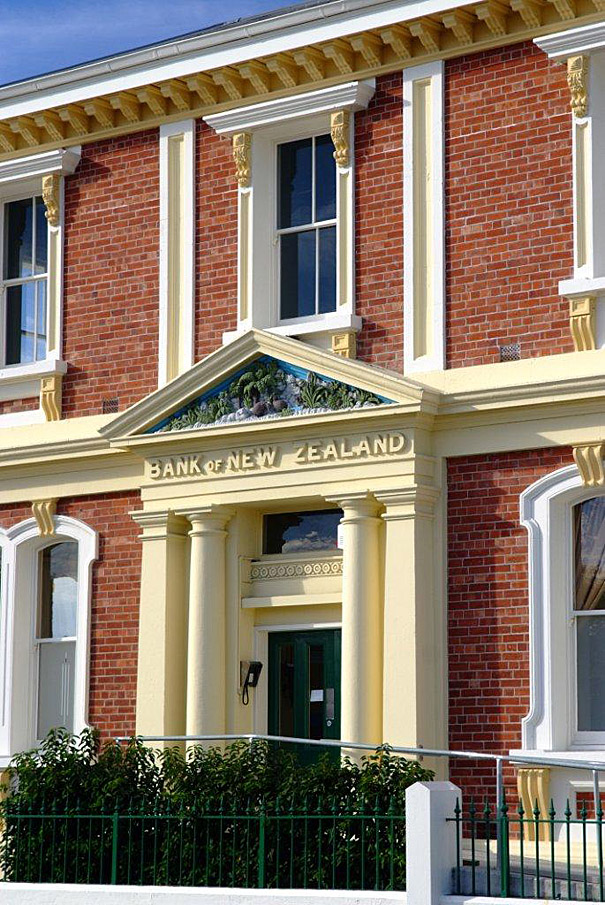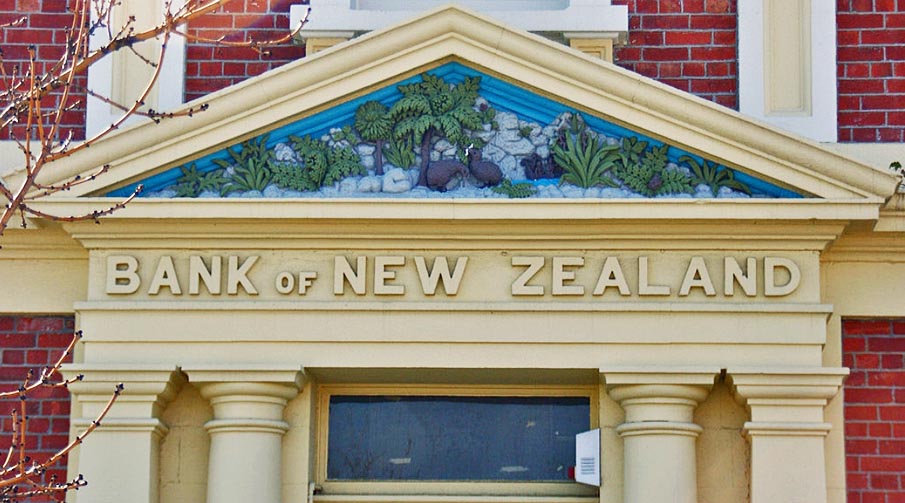The former Bank of New Zealand (BNZ) building at Kaiapoi was built in 1883 and replaced the earlier timber building, which had housed the bank on the site since 1862. The Kaiapoi branch of the BNZ opened soon after the founding of the bank in 1861. The establishment of the bank was described by historian W.J. Gardner as one of the landmarks in New Zealand's economic history. The main driving force behind the BNZ was a young Auckland solicitor and politician, Thomas Russell (1830-1904), who called on New Zealanders' incipient nationalism to support the creation of a New Zealand bank to compete with the two Australian banks already established in New Zealand. His nationalist appeal was successful and the Bank of New Zealand was established with the passing of the New Zealand Bank Bill in 1861. The BNZ's first office opened in Auckland in October 1861 and the bank received the central government's account the following year, which it held until the establishment of the Reserve Bank in 1934. In Canterbury the first BNZ branch opened in Christchurch in March 1862. Others soon followed in Lyttelton, Timaru and Kaiapoi. The Kaiapoi branch was opened in April 1862, by W. Gilkison, and its opening reflected the town's belief that it still had the potential to outstrip Christchurch as the main Canterbury settlement. By 1871 there were 39 BNZ offices established, of which 31 were in the South Island, reflecting the economic importance of the South Island at this time. The original BNZ building at Kaiapoi was constructed in timber. In 1882 it was decided to replace it with a building constructed of permanent materials. W.B. Armson, the noted Canterbury architect responsible for a number of fine bank buildings around New Zealand, drew up plans and called for tenders for the Kaiapoi branch building. However, building did not go ahead and Armson died in 1883, leaving the BNZ to make other arrangements. T.S. Lambert, another Christchurch architect, was then commissioned to design the building and he drew up plans for the present two-storey red-brick building. Such a building, argued B.N.Z archivist R.H. Griffin, was typical of the 'suburban or ersatz-city style' of New Zealand bank architecture. As was commonplace at the time, the building was designed to house the bank manager as well as the bank, and Lambert distinguished the two different roles of the building by the different treatment of the two facades. A bay window on the Williams Street facade indicated the residential nature of that side of the building, as compared with the classical entrance on the Charles Street side. The classical elements of the Kaiapoi BNZ link it architecturally to the wider history of Victorian bank architecture. The building contained the main banking chamber, the manager's office, a stationary room fitted in under the staircase, and a strong room. As well as the dining room with its bay window on the ground floor, the manager was provided with a kitchen, scullery and pantry downstairs, and five bedrooms, a drawing room, and bathroom upstairs. At a later stage the bank's business expanded to fill the residential space as well. The plaster relief in the pediment over the Charles Street entrance illustrates the BNZ's emblem of a distant waka and kiwis amidst native plants, linked at the time with the BNZ's own banknotes. According to Richard Wolfe, author of 'Kiwi: More than a Bird', the BNZ use of a kiwi as its symbol is one of the oldest symbolic uses of the bird. This motif, although perhaps once common on BNZ buildings throughout the country, is a distinctive feature of the Kaiapoi building today. The former BNZ building at Kaiapoi was constructed during a period of optimism for the bank, in the year of its twenty-first anniversary. At the time of its opening it was the only banking institution in Kaiapoi and 'nearly the sole building in that town erected in brick and stone', according to a contemporary newspaper report. The solidity of the Kaiapoi bank building, firmly planted on a prominent corner, projects the stability, dignity and eminence of the bank in the nineteenth century. The institution of the BNZ has been closely tied with the history of New Zealand since its inception in 1861 and this building stands as a reminder of that history. It is a particularly well preserved example of a nineteenth century bank building, and continues to make an important contribution to Kaiapoi's streetscape.




Location
List Entry Information
Overview
Detailed List Entry
Status
Listed
List Entry Status
Historic Place Category 1
Access
Private/No Public Access
List Number
3677
Date Entered
6th June 1985
Date of Effect
6th June 1985
City/District Council
Waimakariri District
Region
Canterbury Region
Legal description
Lot 1 DP 36550
Stay up to date with Heritage this month
